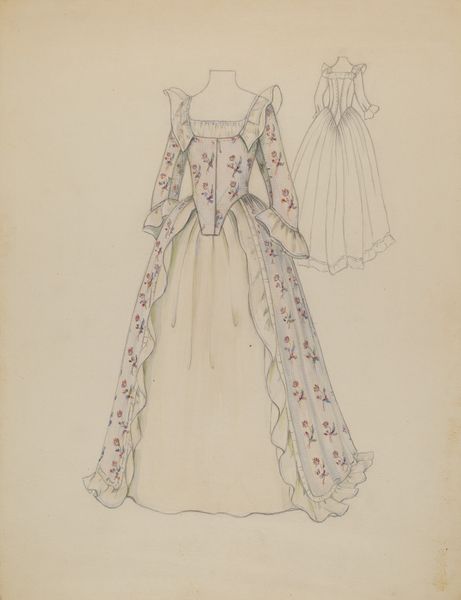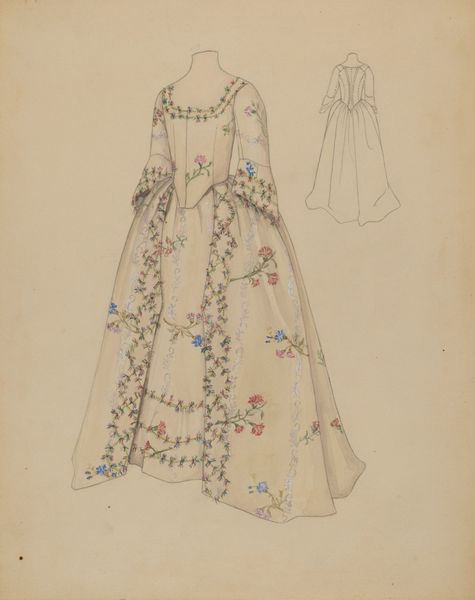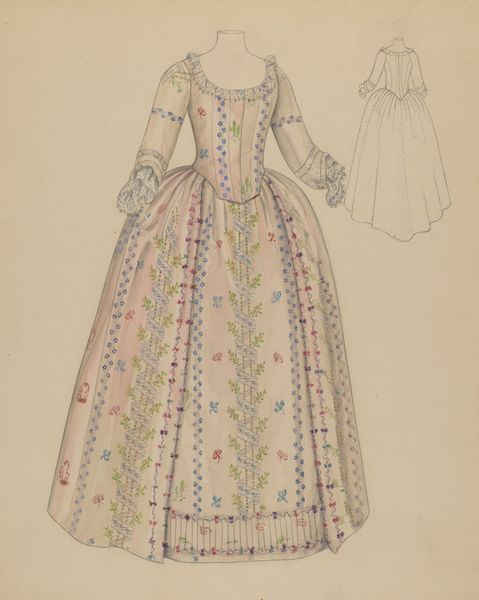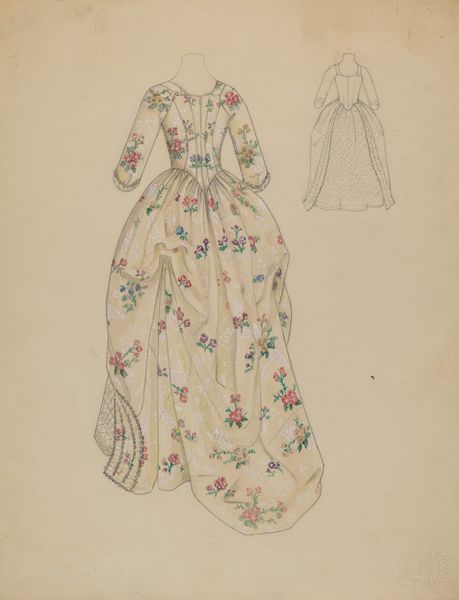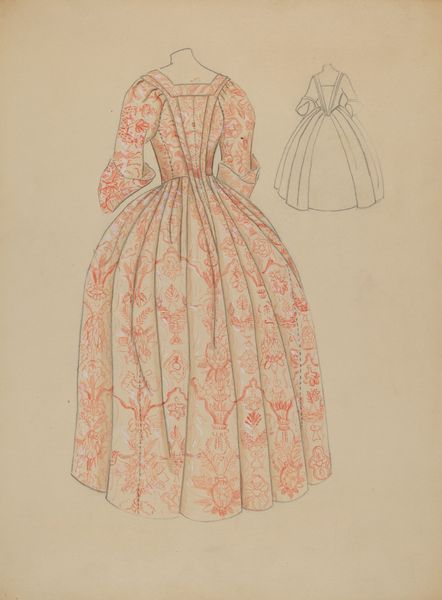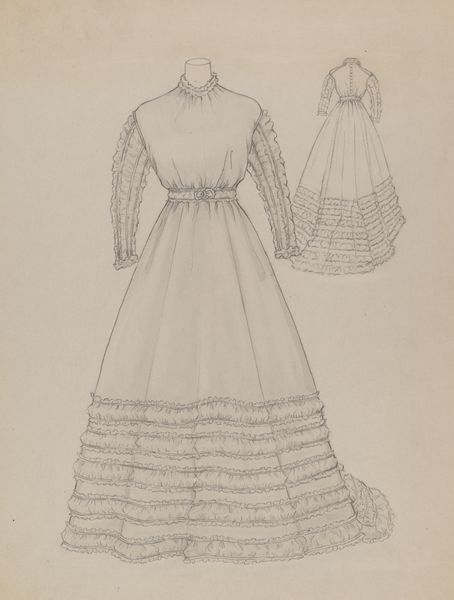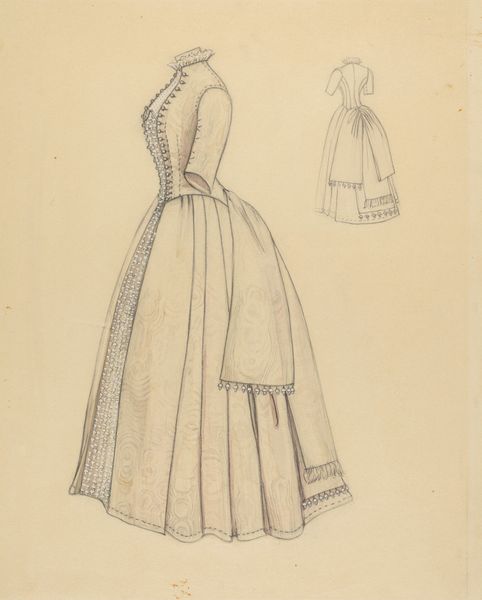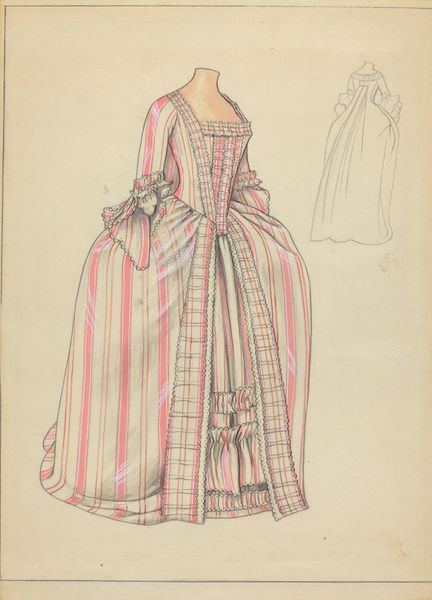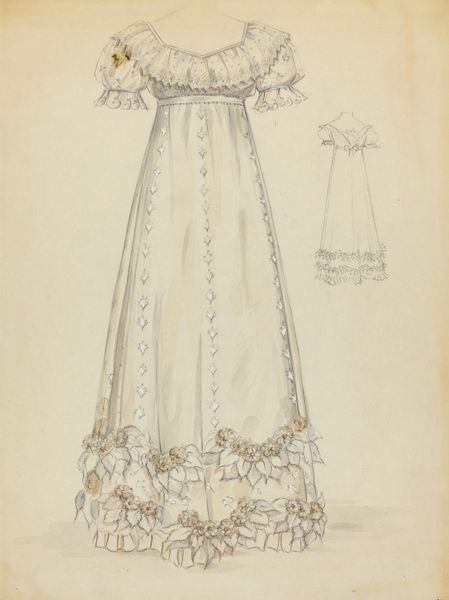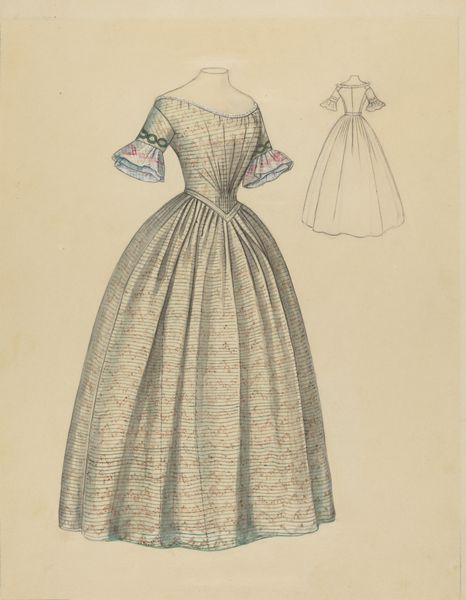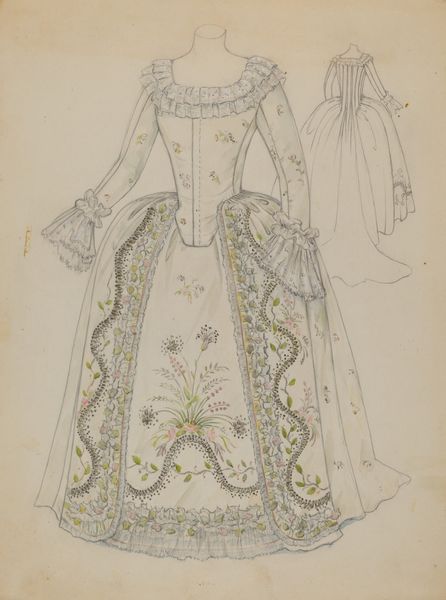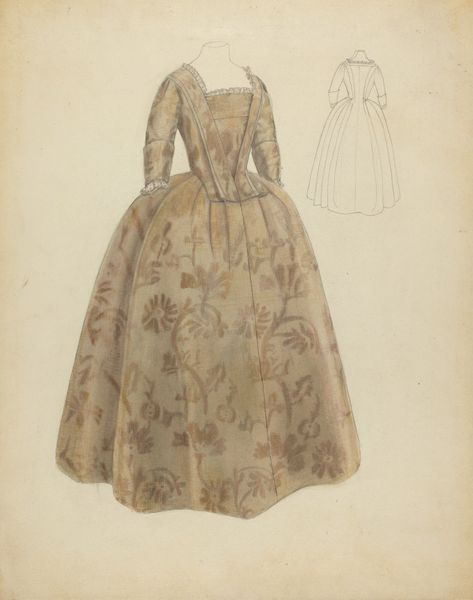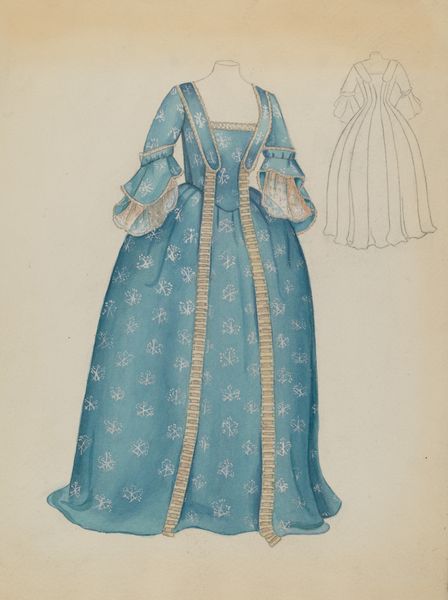
Dimensions: overall: 29.8 x 23.2 cm (11 3/4 x 9 1/8 in.)
Copyright: National Gallery of Art: CC0 1.0
Editor: Here we have a pencil drawing titled "Dress" from around 1936 by Jessie M. Benge. The delicate floral details along the skirt are just lovely, it gives the dress a very romantic air. What’s your take on this, from a curatorial perspective? Curator: This fashion sketch offers a window into the ideals and constraints surrounding femininity in the 1930s. Consider the high neckline, the fitted bodice. How does this design both embrace and restrict female identity? Editor: I see what you mean! It’s elegant, but it's also quite formal and structured. I suppose it's about projecting a certain image. Curator: Exactly! The rose embellishments and delicate lace trim might symbolize fragility and beauty, reinforcing conventional gender roles. How do you think economic conditions of the time influenced such design? Editor: Well, the Depression was ongoing. Maybe the relatively simple design, despite the lace, speaks to a need for practicality, or at least the illusion of it. Something lovely and aspirational but also achievable? Curator: That's a very insightful reading! We might also consider who this design was for. Was it accessible to working-class women, or was it targeted toward a more privileged class, reflecting their aspirations and ideals? Who got to dream these dreams of romanticism? Editor: It’s fascinating to consider how seemingly simple artwork like this contains so many layers of social and economic context. I’ll never look at a fashion sketch the same way again! Curator: Precisely! It reveals how even seemingly innocent forms of creative expression can perpetuate or challenge prevailing norms around class, gender, and identity. Thank you, I’ve learned a great deal today, too!
Comments
No comments
Be the first to comment and join the conversation on the ultimate creative platform.
